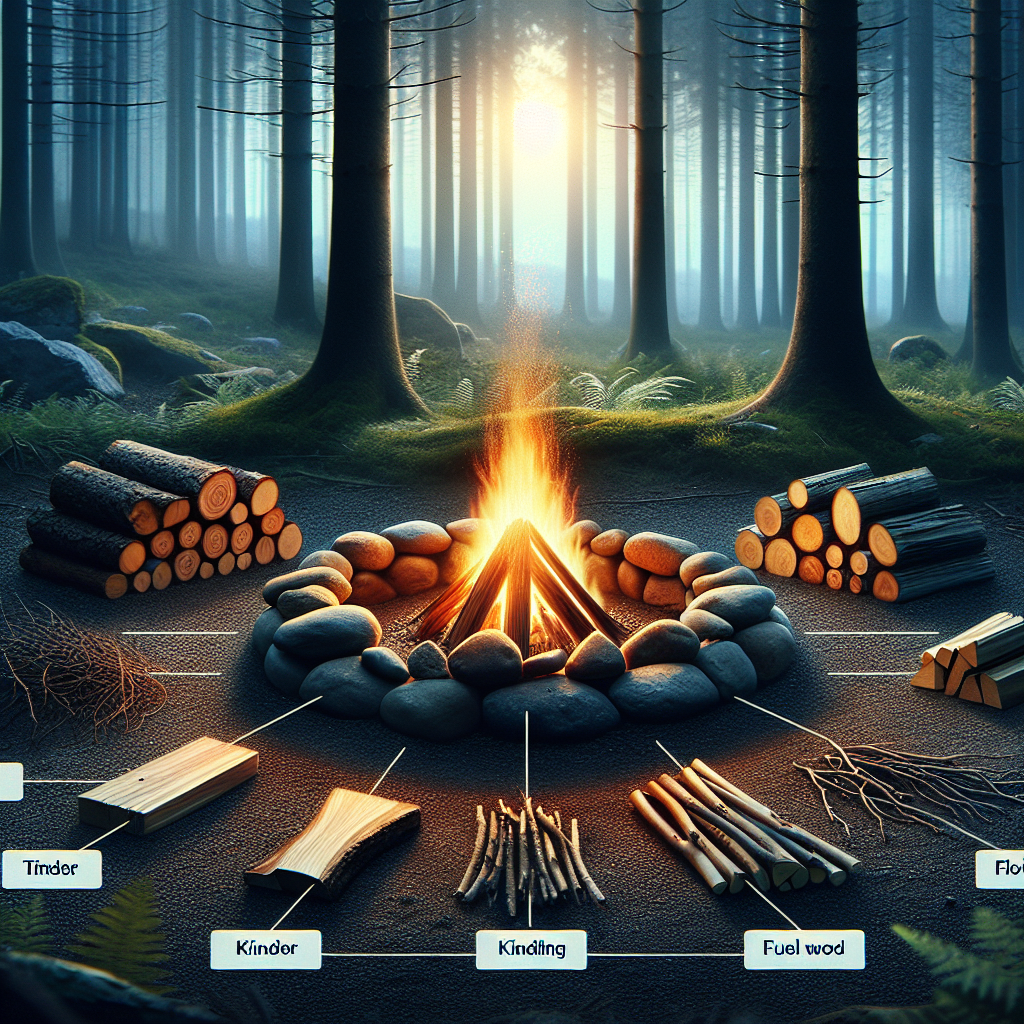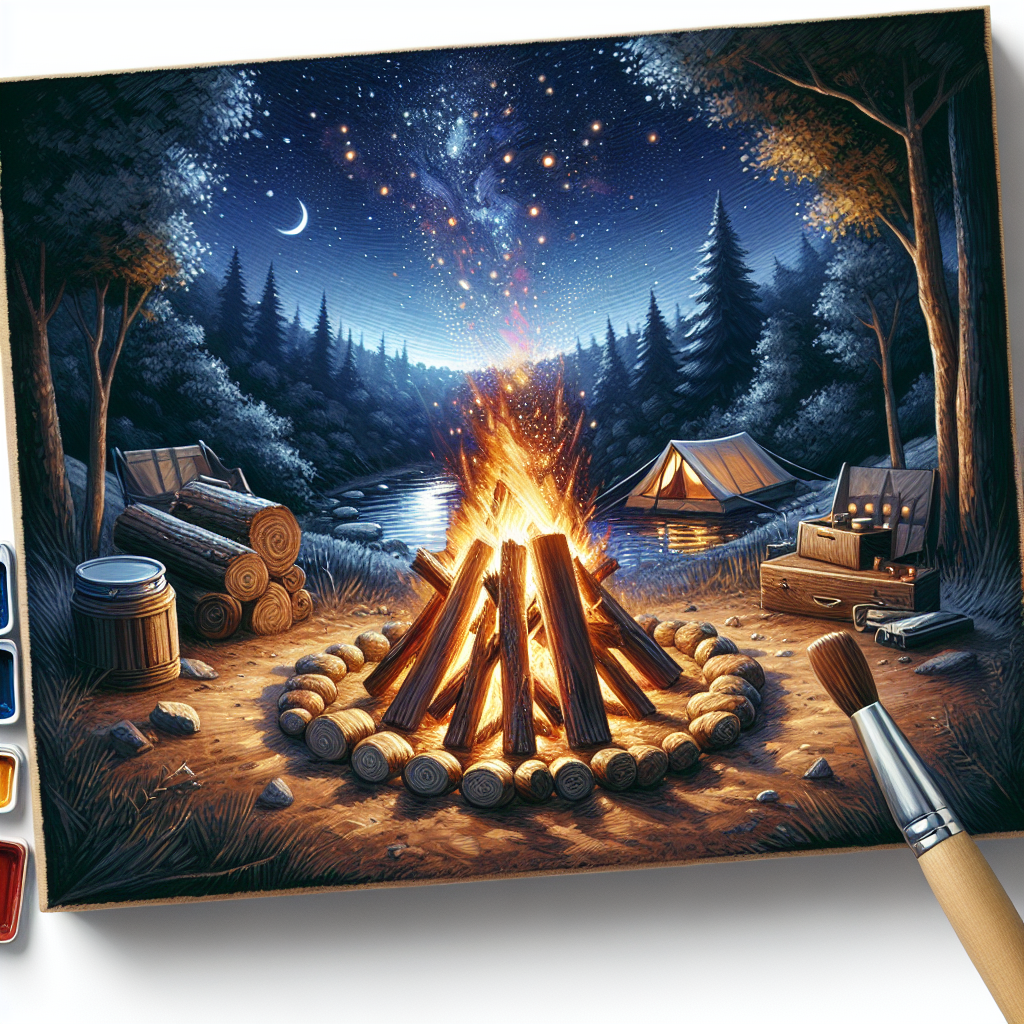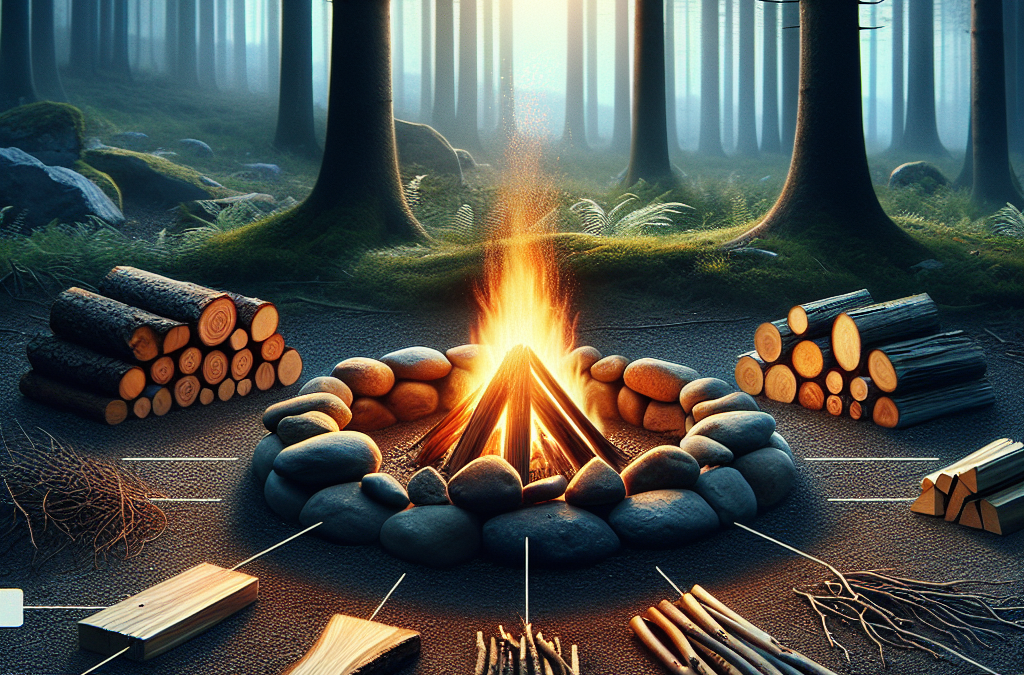In the vast expanse of nature, there is nothing quite like the simple magic of a campfire. If you’ve had the chance to cozy up around one, you know the unique sense of unity it brings, the shared warmth, the tales exchanged under a starlit sky. Whether a seasoned adventurer or a newcomer to the outdoors, “How To Build The Perfect Campfire: A Step-by-Step Guide” is designed specially for you, courtesy of TrailTrekTribe. Under the trusty direction of our founder, Noah Parker, and imbued with our shared love for the wild, this guide, just like our comprehensive gear reviews and engaging outdoor activity guides, is based on tried and true experiences. In essence, it aspires to light your path in the great unknown, equipping you to build not just a fire, but a memorable adventure.
Understanding the Basics
You know, there’s something truly magical about sitting around a crackling campfire under a star-studded sky. As passionate outdoor enthusiasts at TrailTrekTribe, we believe that a fire can instantly transform your camping experience.
The importance of fire in camping
Fire plays a crucial role during camping trips. Other than giving you warmth in the cold nights, it’s a source of light, a way to cook food, and a focal point for social gatherings. Furthermore, the soft flickering light of a campfire can instantly boost your mood and create an atmosphere of tranquillity.
The three essential elements of a campfire
For a successful campfire, you need three essential elements: oxygen, heat, and fuel. Oxygen, available in the air, supports the combustion process. Heat derives from your initial fire source like a lighter or a matchstick. Fuel refers to your collected wood or other combustible materials. When these three elements are present, a fire can dance into life.
Selecting the Right Location
Considering the surroundings for safety and convenience
Choosing the right location for your campfire is a matter of safety and convenience. You will favor a spot that’s far from shrubs or trees to prevent those stray sparks from starting a fire. It’s also important that your chosen spot is wind-sheltered and on flat ground for stability.
Looking for existing fire rings or fire pits
The ideal situation is to look for an already existing fire ring or pits. Not only are these areas already cleared of flammable materials, but reusing them helps minimize the impact on nature because we always strive for sustainability and respect for the environment at TrailTrekTribe.
Making sure area is clear of flammable materials
Before you make a fire, ensure the area is free from flammable materials like dried leaves or debris. Create a clearance area of at least 10-feet in all directions around the fire.

Gathering Tools and Materials
Listing essential tools and materials
The essential tools and materials for making a fire include a shovel or trowel, matches or a lighter, and fire starters such as newspaper or commercial starters. And of course, you will need firewood.
Choosing types of firewood: Tinder, Kindling, and Fuelwood
Understanding the types of firewood will have the fire burning efficiently. Tinder, such as dry grass, leaves, or small twigs, catches fire quickly. Kindling, like larger twigs and small branches, keeps the fire going, and Fuelwood (logs or large branches) maintains your fire’s longevity.
Utilizing the environment responsibly
When gathering firewood, remember to respect nature. Use only fallen branches and twigs and never strip living trees for wood. Over harvesting of wood can harm the local ecology.
Setting up the Fire Ring
Defining a fire ring
A fire ring is a containment area for fire, usually a circle made from rocks. It serves as a protective barrier preventing the fire from spreading to nearby flammable materials.
Digging the pit and outlining with rocks
When setting up a fire ring, dig a small pit approximately a foot deep in the center of your cleared area. This pit will provide additional containment for your fire. Arrange rocks around the edge of the pit to create the ring.
Ensuring safety measures
Ensuring the fire ring is secure is a crucial safety measure. Ensure rocks are sturdy and make sure your fire ring is a safe distance from your tent and other camping gear.

The Art of Stacking Firewood
Introducing different stacking techniques
Understanding how to stack firewood correctly can make a big difference in how well your fire burns. Methods include the teepee method, where kindling is arranged in a cone shape, and the log cabin method, where firewood is stacked in an alternating formation.
Discussing the pros and cons of each method
Each stacking method has its pros and cons. The teepee method, for instance, helps the fire start quickly but can burn out fast. On the other hand, the log cabin method is more stable and burns longer, but it may require more effort to light up initially.
Choosing the right stacking method based on the situation
Choosing the right stacking method largely depends on your specific needs. A fast-starting fire might be suitable for a quick warm-up or cooking, while a long-lasting fire may be best for an evening of stories and relaxation.
Lighting the Fire
Carefully applying fire starters
Starting your fire needs care and precision. It is best to start using your tinder and kindling, applying your fire starter carefully to these lighter materials.
Adding firewood progressively
Once your fire begins, slowly feed in your larger pieces of kindling, then gradually your fuelwood. Be careful not to add too much too quickly, or you could smother your young fire.
Considerations for windy conditions
In windy conditions, you might need to use a windbreak or orientate your fire to minimize the impact of the wind.
Maintaining and Managing the Fire
Regulating Flames and heat levels
Keeping your fire at a manageable size is essential. If you want to regulate the heat, reduce the fuelwood amounts to lower the flames, or add more to increase the heat.
Adding fuelwood appropriately
You should only add firewood when necessary and not let the fire get too large. Remember, the aim is to have a campfire, not a bonfire.
Safety precautions to observe
A cardinal rule is never to leave your fire unattended. Also, always have water or a shovel to suffocate the fire quickly if need be.
Cooking on a Campfire
Creating a stable platform for cooking
Once your campfire is stable, you can begin preparing for cooking. Ensure you have a sturdy grill for placing your pots or pans, or use elongated sticks for roasting over the flames.
Adjusting heat for cooking
To cook effectively, you’ll want to cook over the embers, not the flames, as it offers consistent heat.
Types of suitable food for campfire cooking
Most foods cook well on a campfire, such as meat, veggies, and even marshmallows for a sweet treat. Simply wrap them in aluminium foil and throw them into the coals or place on the grill.
Extinguishing the Fire
When and why to extinguish the fire
A fire should be put out when you’re leaving the campsite or retiring for the night. It’s critical for both environmental and safety reasons.
Procedures for safely extinguishing the fire
To safely extinguish your fire, sprinkle water until all embers and logs are wet, and then bury it with soil or sand. Beware not to pour too much water as it can scatter the hot embers.
Checking the fire is out completely
To confirm the fire is out, touch the extinguished campfire carefully. It should feel cool to the touch.
Campfire Safety and Regulations
Knowing local fire rules and regulations
Before lighting any fire, ensure you know the local fire rules and regulations. Some areas may restrict or prohibit fires, especially in dry seasons or in certain wildlife-sensitive areas.
Keeping fire manageable and never unattended
Keeping your fire manageable, controlled, and under constant supervision can safeguard against wildfires, one of the outdoor adventurer’s worst possible scenarios.
What to do in case of a wildfire
In the event of a wildfire, move away immediately and report it to the local authorities immediately. Practice the “Leave no Trace” principle and ensure utmost safety when exploring the outdoors.
Remember, at TrailTrekTribe, we celebrate the spirit of adventure, but we are also advocates for nature. Stay safe and enjoy your campfire, knowing you’ve acted responsibly and with respect for our natural world.

